Fotokiosk: Hedge branch
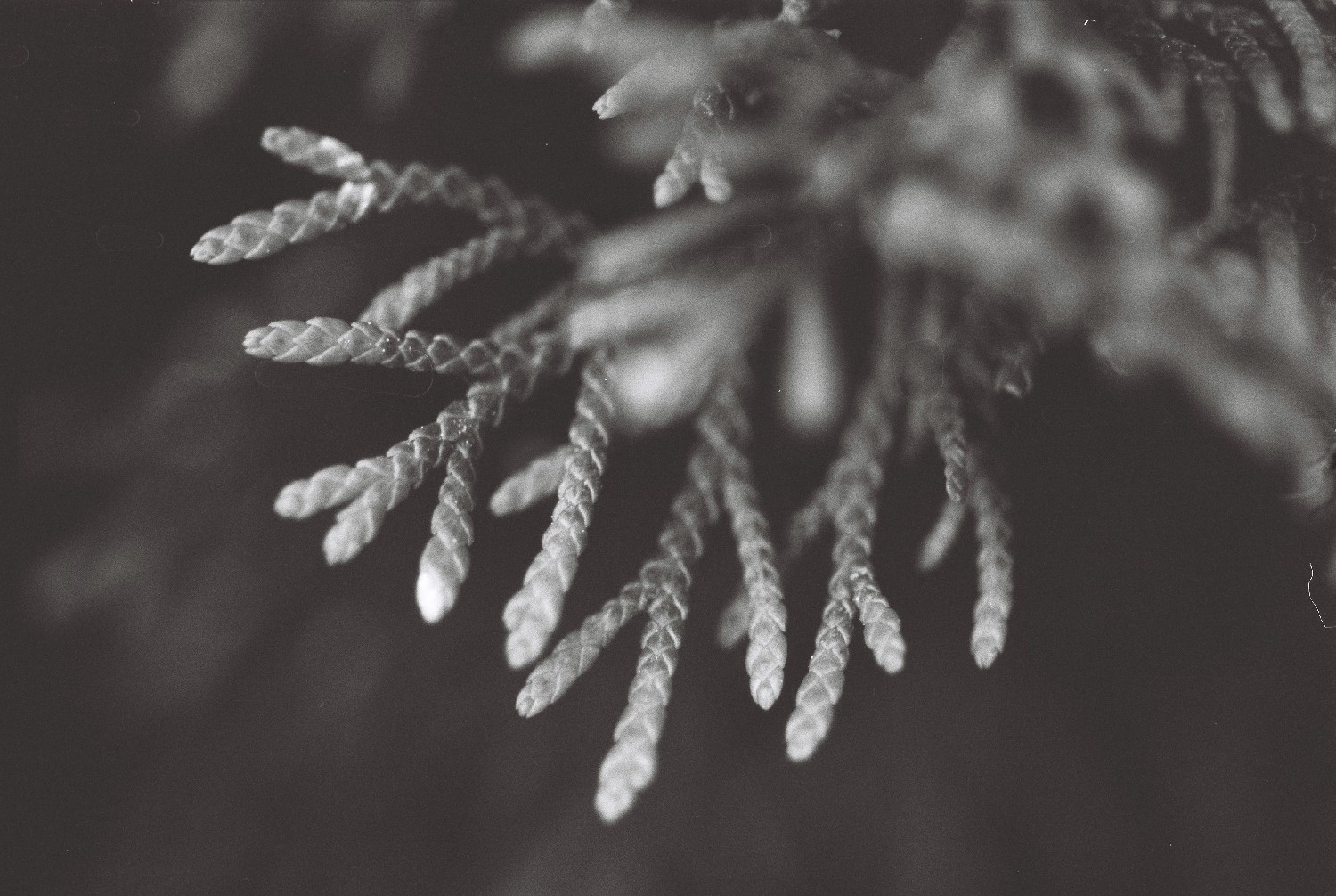 An almost unremarkable hedge branch
An almost unremarkable hedge branch
2022
Camera + lens: Minolta 9000 AF + Minolta AF 100mm Macro f2.8
Film: KODAK 100T-MAX
Development + scan: Charlie Engel Lab 2.0
 An almost unremarkable hedge branch
An almost unremarkable hedge branch
2022
Camera + lens: Minolta 9000 AF + Minolta AF 100mm Macro f2.8
Film: KODAK 100T-MAX
Development + scan: Charlie Engel Lab 2.0
In my monthly recap December 2023 I wrote about how I fiddled around with the blog. I was at the very beginning. Plugins were selected but no end was in sight in terms of implementation. After about a month, things did happen.
Reminder:
How far have I got and which experience have I done?
The german text was at the top and the english text at the bottom in a blog post. Only the german text was shown on the blog's homepage. You had to use the read more-tag, which I elegantly labelled "Go to english version", to get to the whole post and would landed directly at the english text.
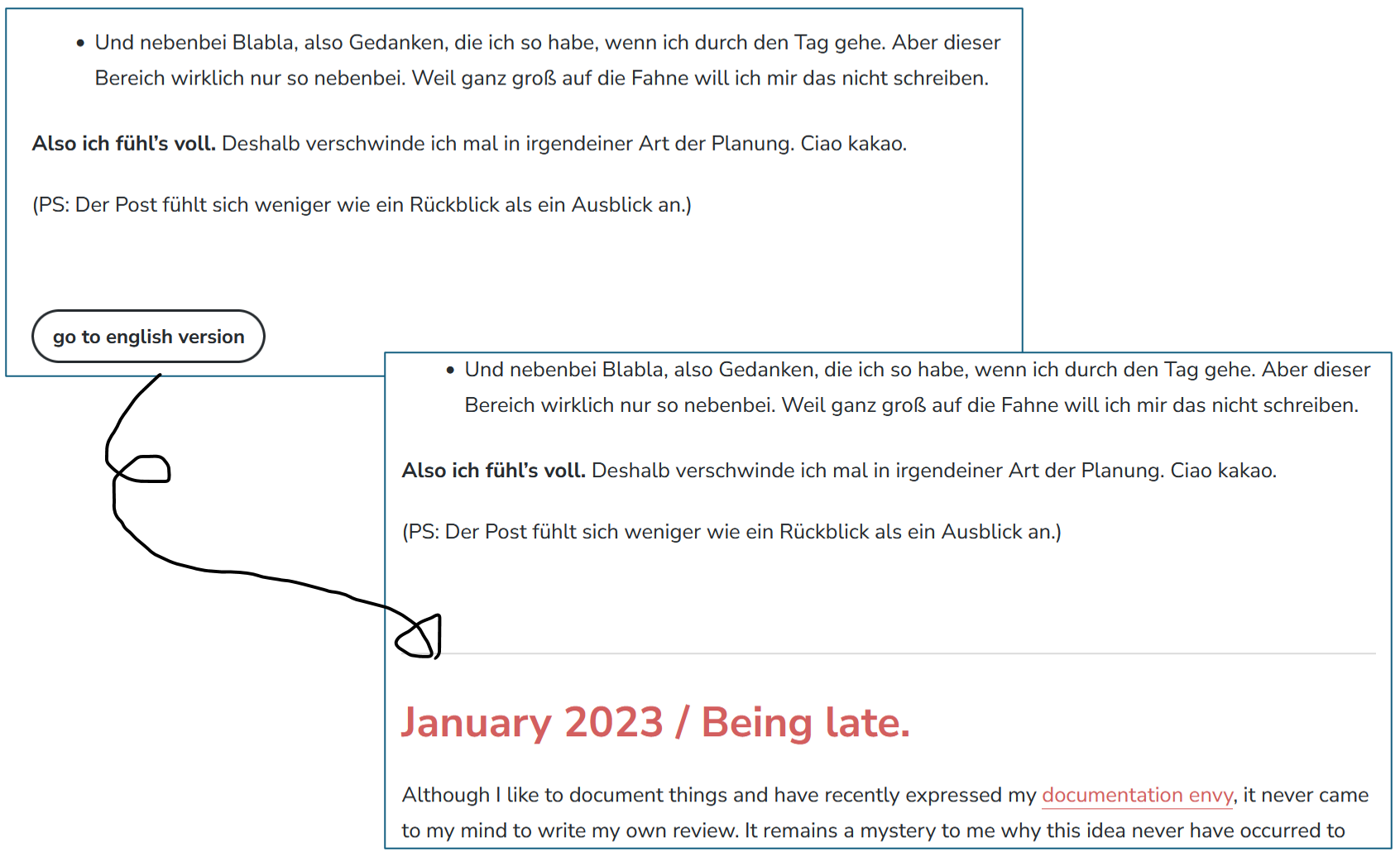
The entire page should be written and displayed in one language. A button should be used to switch from one to the other language.
I have decided in favour of the plugin TranslatePress .
Before that, I came across Polylang and have tried it out as well. However, I didn't quite like this tool because it effectively creates a new page per post. As a result, previous comments were available on the german page (which is the source page) but not on the english one. I didn't like that. This is different with TranslatePress and somehow the english page/version is converted differently. The german text is replaced with the english text but the overall structure of the german page is retained (What the technical difference is? - idk).
I watched these two videos and they really helped me to make my decision. Without the YouTuber, I wouldn't have come across TranslatePress so quickly or at all.
I've started the adaptions post by post. And now it's WIP. I was thinking about doing it all at once because I didn't want to have a few posts in the old format (both languages in one post), and some new posts already in the new format with one language only where you can switch between the languages with a button. Somehow I was afraid that this would look too wild. But it doesn't. If it's in the old format, you'll find the read more-tag. Otherwise, it's now gone because I deleted the english part from the post.
And so I'm slowly working my way through and back, down the blog history so to speak. Whenever I feel like it and have time, I revise a few posts and it's an ongoing process.
The plugin is live and you can switch between german and english by clicking on EN/DE in the menu ribbon at the top right.
I'm happy with this fiddling. Of course it drags on, and sometimes a post takes longer than I thought. Overall, this in-between state doesn't bother me as much as I initially thought. I'm glad that I watched the second video - the one about TranslatePress - and realized that it was the better option for me.
The only way to react to a blog post was to leave a comment.
I liked the idea of a Like-button and thought of it being very charming, in case there is nothing to say and you still want to leave a reaction. So I had to find something suitable.
I found what I was looking for with the help of Jenni from jenni.works. I first saw the emoji reactions on her site and was thrilled. She told me about the plugin DaReactions and that's what I ended up with.
Done and ready to use.
To see and use the emoji reactions, you have to click on the post and read it in single view. You find the emojis at the end of a post.
It was easy to implement and I am happy.
I use both plugins in the free version and so far they fulfil what I wanted. Ergo: Successful fiddling.
When I think about botanical gardens, the educational aspect is the first thing that comes to my mind. They are often attached to a university and when you enter a botanical garden, the plants are categorized according to a system. And you see these little rectangular metal plates everywhere, with the scientific name engraved in black. Sometimes there is even a trivial name that you can learn.
What I usually don't take home: Knowledge about plants. I told myself often: Today you're going to look at a plant, memorize it and its name! And if you do that a few times, you'll have expanded your repertoire of knowledge about plants by at least a little bit.
And so many times this was too much effort and I simply enjoyed the plants and how they were put together.
As I have learnt from the german Wikipedia entry "Botanischer Garten" (Botanical Garden) I did everything the correct way. It says (the following quote is translated by DeepL and me): "'Science and pleasure' was the motto of the botanical gardens at Kew near London (England), at the beginning of the history of the great botanical gardens in Europe and America." Thus, pleasure is at least as desirable as the scientific aspect.
Once I actually learnt something. I can't quite remember how it all happened in detail but here's my vague recollection: there were one or two ginkgo trees in a botanical garden. Next to the metal name plates was a poster promising more information. It was written: Ginkgo trees have two sexes - female or male. The botanical garden only had trees of one gender because the other gender had something smelly.
I did a quick research on the missing details so that neither you nor I end this text with dangerous half-knowledge. The Karlsruhe botanical garden explains in the section "Männliche und weibliche Ginkgos" (Male and female ginkgos): Female plants develop fruits in autumn which eventually fall off the tree. If you crush them then, they will stink of butyric acid. I therefore assume that the Dresden botanical garden, where I had read the poster, only had male plants.
However, the pictures of the ginkgos are not taken in the Dresden botanical garden, but - after having strawberry tartlet - in the botanical garden not far from the S-Bahn station Klein Flottbek in Hamburg.
Last but not least, two random things: Firstly - Goethe wrote a poem about the ginkgo called "Ginkgo biloba". And secondly - don't forget the g after the k in the word ginkgo.
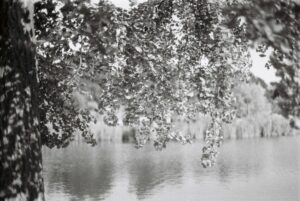
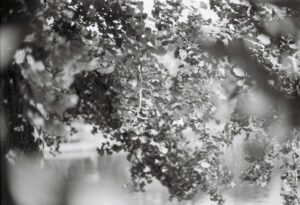
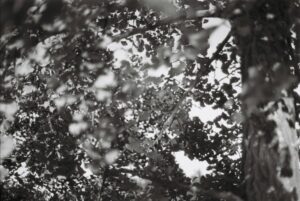
Camera + lens: Minolta 9000 AF + Minolta AF 50mm f1.4
Film: KODAK 100T-MAX
Development + scan: Charlie Engel Lab 2.0